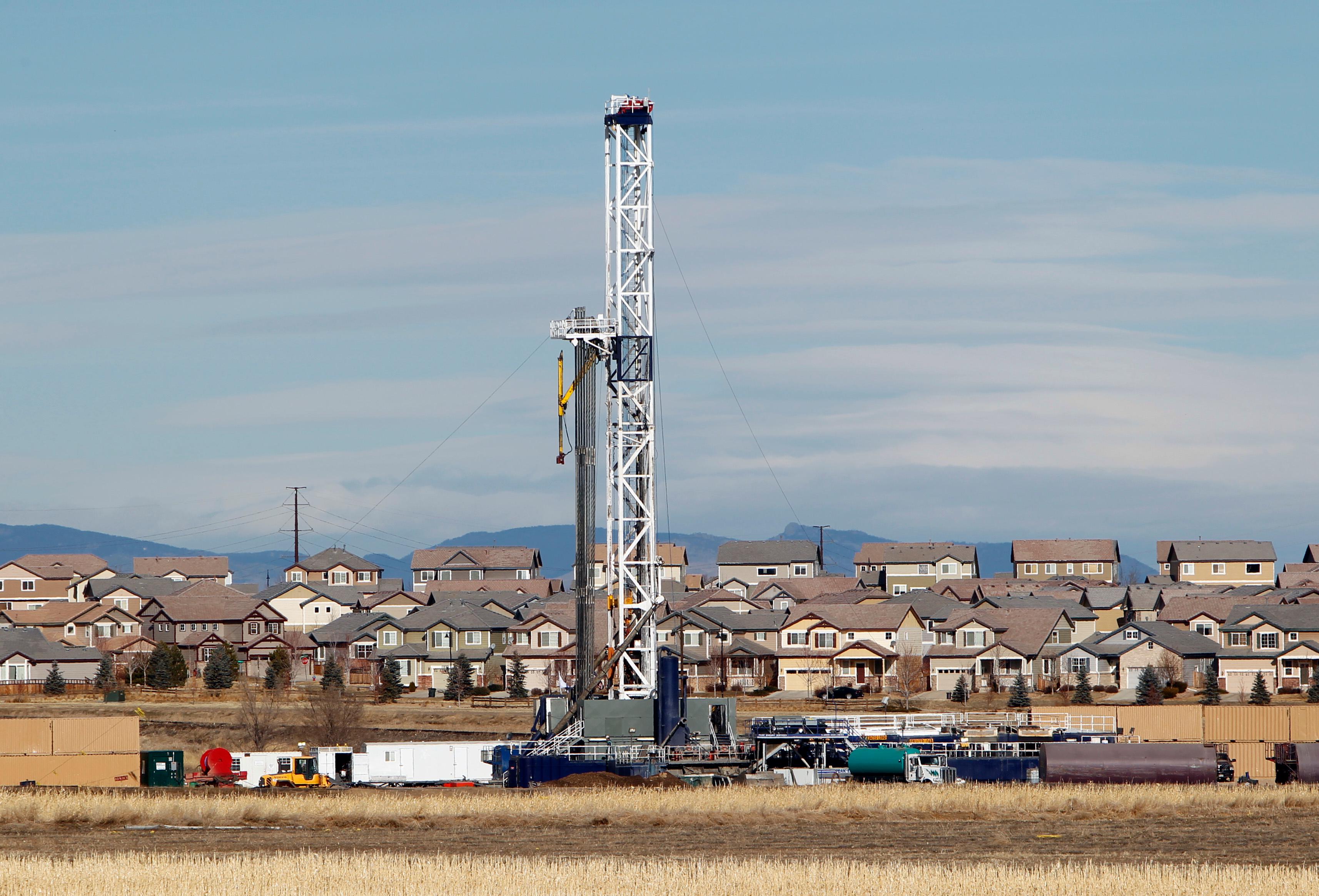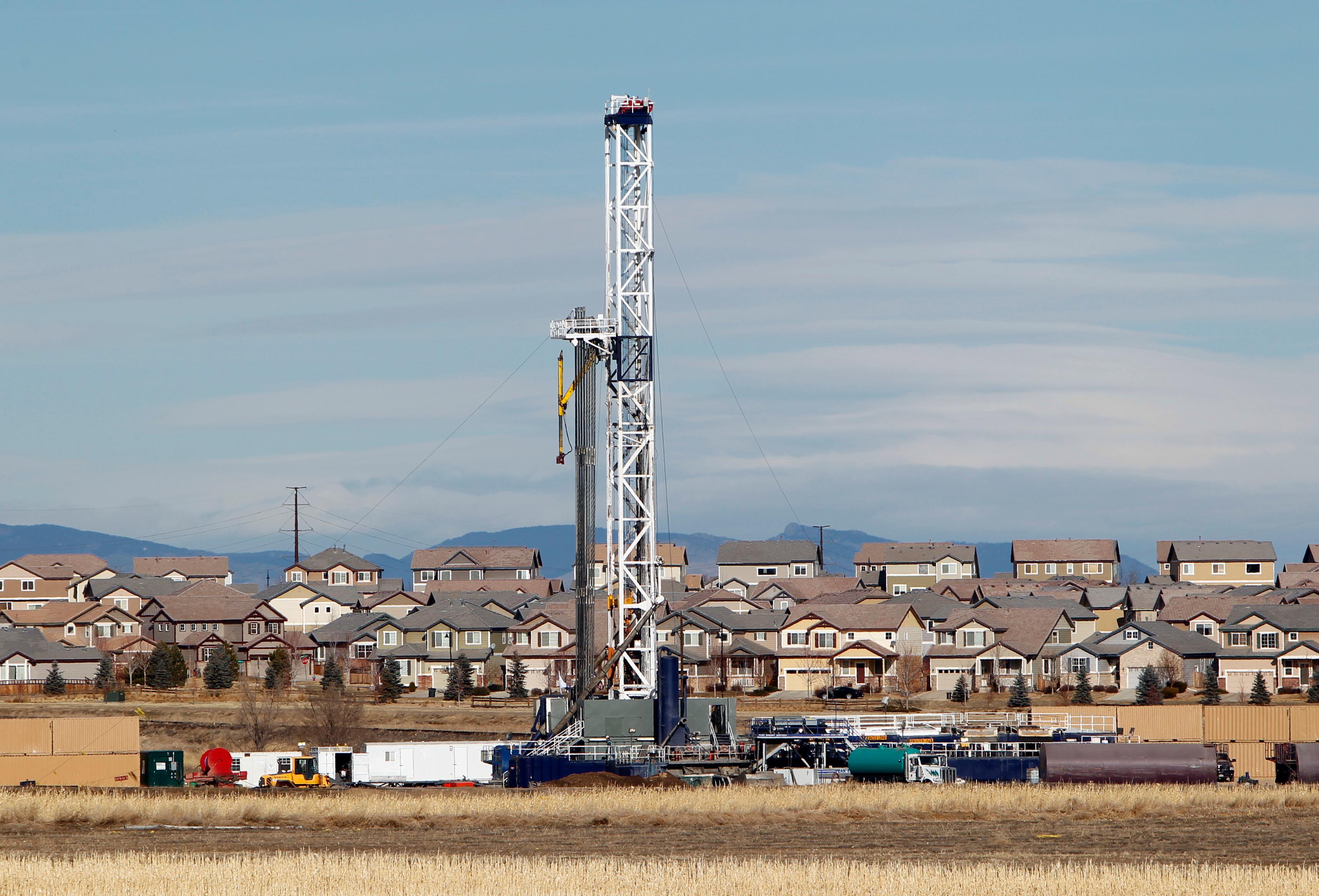

Colorado residents living near oil and gas wells may be exposed to harmful air pollutants that sometimes exceed EPA health guidelines, finds a new study by the Colorado School of Public Health researchers.
The study looked at levels of harmful benzene and other hydrocarbons released into the air from oil and gas wells and infrastructure. Researchers found that people who live within 500 feet of a well in Colorado may experience a lifetime excess cancer risk eight times higher than EPA’s upper acceptable levels.
“We do know that concentrations of hazardous air pollutants like benzene are closer to these oil and gas well sites. So it’s not surprising that the health risks are also higher as you get closer to those sites,” said the study’s lead author, Lisa McKenzie, an assistant research professor.
On Monday, state health officials said they have not detected elevated health risks from the benzene and other hydrocarbons measured in McKenzie’s study. They stressed they’ll continue to gather data for a detailed risk assessment with Colorado State University researchers.
“This report underscores the potential public health importance of the 500-foot setback and the need to collect more comprehensive air quality data in communities in close proximity to oil and gas operations,” said Dr. Larry Wolk, executive director and chief medical officer at the Colorado Department of Public Health and Environment in an email.
Benzene and alkanes are colorless odorless gases that can be emitted from oil and gas equipment if they’re not tightly sealed. Researchers analyzed about 660 air samples taken in Boulder and Weld counties during the summer of 2014.
“The one that was the highest and of the most concern was benzene,” said McKenzie. “We found that the closer you got to these sites, the higher the benzene concentrations were in the air samples. The further away [from the wells] the benzene concentrations were lower.”
The study’s findings could be significant because Colorado state law requires companies to build new wells at least 500 feet from homes. But there is no statewide law dictating how close new homes can be built from existing wells. That leaves it up to cities to decide setback distances between old wells and new homes. In Firestone, the setback between new homes and old wells is 150 feet. In Broomfield, the required distance is 200 feet. Longmont requires 750 feet.
So how close is too close?
“I don’t know if there’s ever going to be one absolute answer for that,” said McKenzie. “That’s going to depend a lot about what else is around people, what else they’re being exposed to. But I do think the results from this study…could be used by policy makers in communities as they’re trying to sort out the answers to these questions.”
The trade group Colorado Oil and Gas Association President Dan Haley criticized both McKenzie and the study’s results on Monday.
“The Colorado Department of Public Health and Environment (CDPHE) recently analyzed 10,000 air samples of oil and gas operation at 500 feet or greater and concluded that there is ‘no substantial or moderate evidence for any health effects,’” said Haley in an email.
COGA has been a vocal critic of McKenzie’s research in the past. A 2017 study in Colorado by McKenzie connected rates of certain childhood cancers to oil and gas well proximity. But the Colorado Department of Health and the Environment said it hadn’t noticed an uptick in certain diseases.
McKenzie said she used California guidelines, not those of the EPA, for conducting her risk assessment because “California’s guidelines now have more current information on benzene toxicity.”
Dr. Bernard Goldstein, Faculty Emeritus, University of Pittsburgh Schools of the Health Sciences, emphasized the “enormous variability” in methane and hydrocarbons that can leak from oil and gas sites at any given time. He didn’t participate in the Colorado study. But he emphasized how the understood health risks around oil and gas are shifting now compared to 20 years ago.
“When we envisioned what the right setback ought to be we were thinking more explosion and fire. There was just one well being drilled near that site,” he said. “Now there are 10 to 12 wells per site, sites are bigger. So the risks are very different now compared to before."








